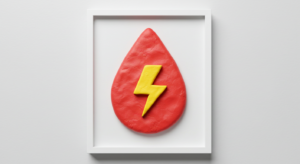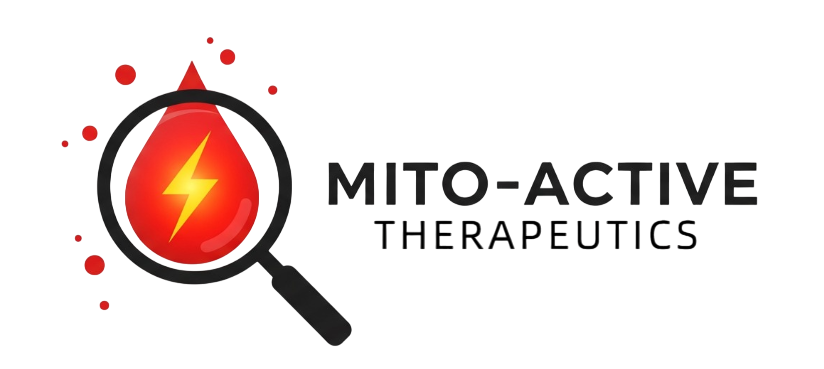Mito-Active Blog

Paul N.
Our goal is to educate and suggest the right tools so you can get back to being you!
Related Post
Are You Getting Enough Light? The Hidden Deficiency Plaguing North America
(and How to Fix It)
Hey everyone, Paul Norris here, CEO of Mito-Active Therapeutics. And I want to talk about something you might not even realize is impacting your daily life, your energy levels, even your overall well-being: light deficiency.
Now, you might be thinking, “Light deficiency? Isn’t that just for people living in caves?” Think again. Especially here in North America, in our modern lives, we’re facing a growing disconnect from natural sunlight – and it’s more serious than you might imagine.
We’re not talking about avoiding the sun for fear of sunburn (though sun safety is important, of course!). We’re talking about the sheer lack of daily, natural light exposure that’s becoming the norm.
Think about your average day, honestly. Wake up, maybe it’s still dark out. Commute in a car or train, often underground. Work all day in an office under artificial fluorescent lights – windows optional, and even then, often filtered or tinted. Lunch break? Maybe indoors, or a quick dash outside before heading back to the office glow. By the time you leave work, the sun might be setting again. Evenings are often spent at home, bathed in – you guessed it – more artificial light.
The North American Indoor Lifestyle: A Recipe for Light Hunger
This isn’t just a feeling, it’s a reality backed by data. Studies show we spend, on average, a whopping 90% of our time indoors. [Article Name: “EPA Report on Human Exposure to Air Pollution,” Author: United States Environmental Protection Agency (You can link to the EPA website or search for EPA reports on indoor time use)]. Ninety percent! That’s practically living in twilight compared to our ancestors who spent their days basking in the sun (and yes, working hard in it too!).
And it’s not just about being indoors in general. North America’s geography and climate play a big role. Many of us live in northern latitudes where winter days are short and sunlight is weak even when we are outside. Cloud cover, pollution, and even modern building design can further reduce our exposure to beneficial sunlight rays, especially UVB which is crucial for Vitamin D production.
The Downside of Deprivation: More Than Just Vitamin D
Now, you’ve probably heard about Vitamin D deficiency, and yes, that’s a major concern. Sunlight is our primary natural source of Vitamin D, and without enough of it, we can face a whole host of problems. Vitamin D isn’t just about strong bones anymore. Research increasingly links it to:
- Mood and Mental Well-being: Seasonal Affective Disorder (SAD) is a well-known example of how lack of sunlight can impact mood. But even subtle deficiencies can contribute to feelings of fatigue, low mood, and even increased risk of depression. [Article Name: “Vitamin D and Depression: An Update,” Author: Anglin, R. E., & Jolliffe, D. A. – Search PubMed or similar databases for this type of article].
- Sleep Quality: Sunlight helps regulate our circadian rhythm, our natural sleep-wake cycle. Lack of sunlight can throw this rhythm off, leading to sleep disturbances and fatigue. [Article Name: “The role of vitamin D in sleep regulation,” Author: Gomin, D., & Bodizs, R. – Search PubMed].
- Immune Function: Vitamin D is crucial for a healthy immune system. Deficiency can weaken our defenses and make us more susceptible to illness. [Article Name: “Vitamin D and the Immune System,” Author: Aranow, C. – Search PubMed].
- Overall Energy and Vitality: Many people find their energy levels dip in the winter months when sunlight is scarce. This isn’t just in your head – light plays a crucial role in cellular energy production.
Stepping Back into the Light: Reclaiming Your Well-being
The good news is, you don’t have to quit your job and move to a tropical island (though wouldn’t that be nice?). We can take steps to combat light deficiency right here, right now, in our modern North American lives.
Here are a few things to consider:
- Maximize Natural Sunlight When You Can: Even short bursts of sunlight exposure throughout the day can make a difference. Take your lunch break outside, even on cloudy days. Position your desk near a window. Get outside for a walk or some exercise in the morning or during daylight hours when possible.
- Consider Vitamin D Supplementation: Especially during winter months or if you know you have limited sun exposure, talk to your doctor about Vitamin D supplements to ensure you’re getting enough.
- Explore the Power of Light Therapy: This is where Mito-Active Therapeutics comes in, and where the science gets really exciting! Photobiomodulation (PBM) therapy, also known as red and near-infrared light therapy, offers a fantastic way to supplement your natural light exposure and reap the benefits of light energy, even when the sun isn’t cooperating.
How Mito-Active Therapeutics Can Help Bridge the Light Gap
PBM Healing devices, like those offered by Mito-Active Therapeutics, deliver specific wavelengths of red and near-infrared light that are scientifically proven to be beneficial for our cells. Think of it as giving your cells a direct dose of revitalizing light energy, mimicking some of the positive effects of sunlight, but without the risks of overexposure to UV radiation.
Our PBM Healing devices can help you:
- Boost Cellular Energy: Light therapy helps your mitochondria (the powerhouses of your cells) produce more energy, combating fatigue and increasing vitality.
- Reduce Pain and Inflammation: PBM therapy is well-documented for its pain-relieving and anti-inflammatory effects, helping you manage aches, pains, and recover faster from injuries.
- Improve Mood and Sleep: By supporting your body’s natural circadian rhythm and potentially influencing neurotransmitters, light therapy can contribute to better mood and sleep quality.
- Enhance Skin Health: Red and near-infrared light are known for their skin rejuvenating properties, promoting collagen production and reducing wrinkles.
- Support Pet and Horse Wellness: Light deficiency impacts our animal companions too! We offer devices specifically designed for pets and horses to improve their well-being and performance.
Explore PBM Healing Devices for Your Needs – mitoactivetherapeutics.com/wellness
Don’t let light deficiency hold you back. You deserve to feel energized, healthy, and vibrant. Take a moment to consider your own daily light exposure. If you’re spending the vast majority of your time indoors, especially during the darker months, you might be surprised at how much a little extra light – in the right form – can truly make a difference.
To your brighter, healthier future,
Paul Norris, CEO, Mito-Active Therapeutics
- United States Environmental Protection Agency. EPA Report on Human Exposure to Air Pollution.
- Anglin, R. E., & Jolliffe, D. A. (2008). Vitamin D and depression: an update. Canadian Journal of Psychiatry, 53(2), 94-98.
- Gomin, D., & Bodizs, R. (2016). The role of vitamin D in sleep regulation. Sleep medicine reviews, 25, 23-32.
- Aranow, C. (2011). Vitamin D and the immune system. Journal of Investigative Medicine, 59(6), 881-886.
